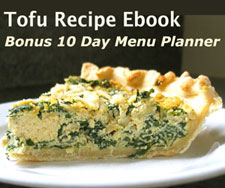
Easy Vegetarian, Vegan Grain Recipes
Savvy Veg grain recipes include both whole and refined grains
How to cook grains: barley, bulgar, corn, couscous, quinoa, millet, oats, rice, etc., and how to make delicious vegetarian and vegan foods with grains.
Our grain recipes don't include pasta, but they do include couscous, which is technically a pasta - figure that one out!
Flour is made from grains, and can be a whole grain food, but mostly it's used for baking, so find it in breads and desserts.
Eating a variety of whole grains is basic to a healthy vegetarian diet. Why Eat Whole Grains?
Grain Recipes Index:
Asparagus Risotto Basic Couscous Basic Millet Basic Quinoa Basic Rice, Brown or White Brazilian Black Beans & Rice Pressure Cooker Recipe Brown Rice Stuffing Breakfast Cookie Recipe Cashew Veggie Fried Rice Cheesy Grits and Greens with Smoky Mushrooms Crockpot Barley Lentil Soup Cuban Black Beans & Rice Jamaican Style Picadillo Kasha with Kale Mediterranean Rice Salad Millet and Sweet Carrots Millet Chickpea Patties Millet, Mung Dhal & Veggie Stew Moroccan Couscous & Chickpeas Nut Loaf Wrapped in Pastry Oatmeal Breakfast Recipe Oatmeal Currant Scones (ovo-lacto, vegan) Oatmeal Date Nut Muffins (ovo-lacto-veg, vegan) Polenta, aka Corn Pudding Polenta With Okra And Black Bean Tomato Sauce Quinoa Lentil Patties Red Beans and Rice Red Lentil and Rice Salad Rice Pudding Sarah's Excellent Granola Seedy Zucchini Rice Seitan Donburi with Unagi Sauce Simple Fried Rice Spicy Tofu Rice Pilaf Steel Cut Oats & Amaranth Cereal Stuffed Winter Squash Tabouleh Middle Eastern Salad Tofu Rice Salad Walnut Veggie Burgers Walnutty Rice Wild Rice Pilaf Back To Recipes Index Medical Disclaimer Privacy Policy Contact UsWhy Eat Whole Grains?
Nutritional science tells us that eating a variety of whole grains is basic to a healthy vegetarian diet.
That means that we should eat whole grains at almost every meal. Refined grains are OK in moderation, and most of us don't need to worry about eating too much carbs.
Speaking of carbs - everybody needs carbs in their diet. Only double or triple helpings of carbs, with lots of added fat, is likely to cause weight gai in sedentary people.
But carbohydrates as found in whole grain foods, and eaten in the recommended serving sizes, won't make you fat, and will give you sustained energy. Not to mention vitamins and minerals you won't get in other foods.
For diabetics worried about carb intake, cooked or sprouted whole grains like brown rice, quinoa, millet, amaranth, teff, buckwheat or barley digest much more slowly than whole grain flour, and you need smaller portions.
Refined flour and grains, such as white rice, or pasta are higher in carbohydrates, lower in protein, and digest more quickly than whole grains, making them not as beneficial for a diabetic diet.
For more info on carbohydrates, download the Free Savvy Vegetarian Nutrition Report, or read the SV review of 'Carbophobia, The Scary Truth About America's Low Carb Craze', by Dr. Michael Greger.







